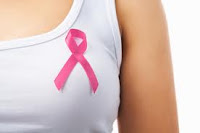There are two main types of lung cancer
namely the small cell lung cancer (SCLC) and the non-small-cell lung
cancer (NSCLC). The SCLC is also known as oat cell cancer. Cancer can
also arise from the supporting tissues such as blood vessels within
the lungs. It can also develop from the pleura which are also called
as mesotheliomas.
One of the most common causes of lung
cancer is prolonged exposure to smoking and tobacco. For the people
who do not smoke, factors such as genetic transfers, exposure to
random gases, passive smoking and hazardous air pollution can lead to
the cause of lung cancer.
The symptoms that may identify the lung
cancer disease include dyspnea i.e. shortness of breath, chest pain
or pain in the abdomen. Dysphonia is a symptom of lung cancer that
leads to hoarse voice. Weight loss, fatigue and loss of appetite are
also some of the common symptoms of lung cancer. Dysphagia which
refers to difficulty in swallowing is another symptom of lung cancer.
Some other uncommon symptoms of lung cancer include wheezing and
clubbing of the fingernails.
The cancer that affects the bronchi and
bronchioles that support breathing, leads to breathing problems. This
may result in pneumonia and hemoptysis i.e. bleeding while coughing.
If it spreads to brain then in that case the lung cancer may also
lead to blur vision and seizures. If the lung cancer spreads to bones
then it usually results in pain in the vertebrae, thigh bones and the
ribs.
You can confirm about the lung cancer
by going through biopsy and chest radiograph. The treatment method to
be followed is decide by a number of factors including the type of
cancer (SCLC or NSCLC), the stage in which it is detected as well as
the personal well being of the patient. Cancer chemotherapy, surgery
and radiology are some of the common treatments for curing lung
cancer.
Patients suffering from this type of
cancer are often given lung cancer chemotherapy as it is proved
efficient to kill the cancer cells present in the lungs. A
combination of different drugs is either given through pills or is
injected in the veins of the patient in such conditions. However,
though effective, lung cancer chemotherapy comes with side effects
that may go away during or after the treatment is over. Some of the
side effects of chemotherapy are hair loss, nausea, vomiting,
fatigue, loss of appetite, etc. It is advised to contact your doctor
whenever any of these or any other side effects are experienced by
the patients.



